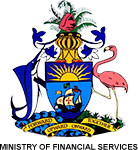Export procedures
Once your products are ready to be shipped for Export according to the buyer’s and the destination market’s requirements, there is an official procedure to follow in order to comply with the Bahamian regulations. They are explained below.
Step 1 – Getting started
Exports from The Bahamas are duty-free and there are no export taxes levied on goods leaving the country. However processing fees and royalties on certain items may apply. Goods readied for exportation stored in Government bonded warehouses and all other goods for export must have the necessary paperwork and forms provided by the Bahamas Customs Department.
Completed forms and supporting documents should be presented to the Customs Aided Industries Section of the Customs Department. For instance, obtain the “C29 – Export entry for domestic goods” form (the yellow form) from the Bahamas Customs Department. Fill it in with all corresponding data corresponding to the shipment. This form can also be filled in electronically from Customs.
Manufacturers and distributors of medicinal, cosmetic and food products who plan to market their products in the USA must obtain, in coordination with the buyer a US FDA registration number. The FDA website explains that process in more detail.
Exporters of seafood and endangered species of fauna & flora must obtain an export license from the Ministry of Agriculture and Marine Resources.
Step 2 – Obtaining necessary certificates
For exports of seafood and endangered species of fauna & flora (including conch), it is necessary to obtain a Certificate of Inspection and a Certificate of Health from the Ministry of Agriculture and Marine Resources. A letter to the Ministry requesting permission to export these goods will initiate the process of inspection that is needed for every shipment.
For exports of products to the European Union benefitting from preferential tariff rates under the EPA (Economic Partnership Agreement) it is necessary to obtain certificate EUR1 that can be sent blank by the European buyer and filled in locally by yourself.
Step 3 – Getting the customs clearance
With all relevant forms and certificates ready, request the Customs Department an appointment with a customs agent who will:
- Review all shipment-related documents
- Review the correctness and exactitude of the declared information in Form C-29
- Examine the merchandise appropriateness for shipment
- Stamp Form C-29 and witness the sealing of the container
For exports to the EU under the EPA, the customs agent will also stamp form EUR1 in order to attest the origin of the merchandise being shipped.

